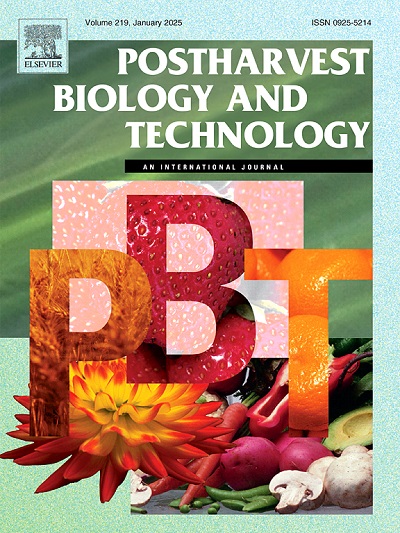α-lipoic acid maintains quality by modulating phenolic metabolism and antioxidant capacity in postharvest strawberry
IF 6.4
1区 农林科学
Q1 AGRONOMY
引用次数: 0
Abstract
Postharvest strawberry is susceptible to mechanical damage and fungal attack, which poses serious storage challenges. In this study, senescence of strawberry fruit was successfully delayed using 0.25, 0.5 and 1 g L−1 α-lipoic acid (α-LA), and microbial proliferation was effectively inhibited during the storage. In particular, the treatment at with 0.5 g L−1 α-LA was the most effective, significantly reducing the decay rate and weight loss, while sustaining the firmness, TSS content and color. Strawberry fruit treated with α-LA showed higher total phenolics, total flavonoids, total anthocyanin, ascorbic acid, and individual phenolic compounds content compared with the control. α-LA attenuated strawberry membrane lipid peroxidation by inhibiting MDA and H2O2 production, and increasing antioxidant capacity. Transcriptomic analysis revealed significant enrichment of genes related to phenylpropanoid biosynthesis, and the transcription factors FaMYC2 and FaMYB308 might act as negative regulators in phenolic metabolism. In addition, α-LA remarkably enhanced the expression of key genes related to phenolic metabolism and anthocyanin synthesis. In summary, α-LA maintained quality by modulating phenolic metabolism and antioxidant capacity in postharvest strawberry.
求助全文
约1分钟内获得全文
求助全文
来源期刊

Postharvest Biology and Technology
农林科学-农艺学
CiteScore
12.00
自引率
11.40%
发文量
309
审稿时长
38 days
期刊介绍:
The journal is devoted exclusively to the publication of original papers, review articles and frontiers articles on biological and technological postharvest research. This includes the areas of postharvest storage, treatments and underpinning mechanisms, quality evaluation, packaging, handling and distribution of fresh horticultural crops including fruit, vegetables, flowers and nuts, but excluding grains, seeds and forages.
Papers reporting novel insights from fundamental and interdisciplinary research will be particularly encouraged. These disciplines include systems biology, bioinformatics, entomology, plant physiology, plant pathology, (bio)chemistry, engineering, modelling, and technologies for nondestructive testing.
Manuscripts on fresh food crops that will be further processed after postharvest storage, or on food processes beyond refrigeration, packaging and minimal processing will not be considered.
 求助内容:
求助内容: 应助结果提醒方式:
应助结果提醒方式:


